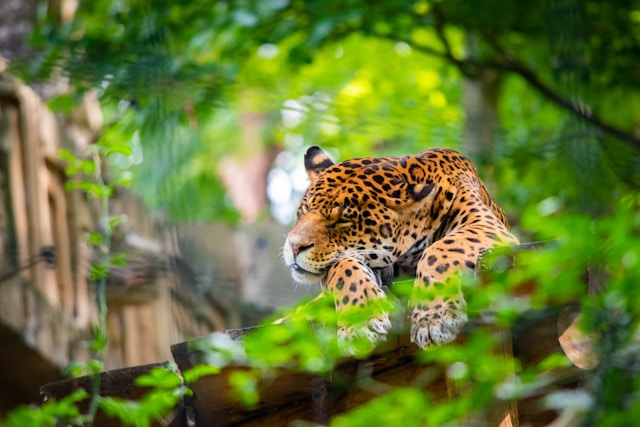Adventure travel has evolved from niche activity pursued by only the most daring explorers into a booming global industry worth billions of dollars annually. Modern thrill-seekers can access extreme experiences worldwide that previously seemed impossible or prohibitively expensive. From skydiving over exotic landscapes to traversing dangerous mountain ranges, the world’s most thrilling adventures are increasingly accessible to adventurous travelers willing to seek them out strategically.
The definition of adventure travel encompasses far more than simply visiting unfamiliar destinations. True adventure travel involves calculated risk, physical challenge, and experiences that push personal boundaries while delivering unforgettable memories. Whether you’re an adrenaline junkie seeking maximum intensity or someone wanting to step outside comfort zones moderately, destinations and experiences exist worldwide matching every thrill-seeking preference.
Understanding the Adventure Travel Industry Landscape
The adventure travel industry encompasses everything from extreme sports to wilderness exploration to cultural immersion in dangerous environments. Major adventure travel operators generate billions in annual revenue managing activities across every continent. Daily expansion of adventure travel offerings means new experiences and destinations emerge regularly.
Understanding how the adventure travel industry operates enables accessing experiences strategically. Operators constantly compete for market share, creating seasonal promotions, group discounts, and package deals throughout the year. Flexibility regarding travel dates and willingness to combine activities often yields significant savings compared to booking individual experiences separately.
Insurance represents an often-overlooked component of adventure travel. Comprehensive travel insurance covering extreme sports activities costs 15 to 25 percent more than standard policies but proves essential for high-risk activities. Many operators require insurance verification before participation. Understanding coverage details ensures protection against accidents and medical emergencies during adventurous pursuits.
Skydiving and Aerial Adventures Around the Globe
Skydiving represents the ultimate thrill-seeker activity, combining intense adrenaline rushes with breathtaking aerial perspectives. Major skydiving destinations offer tandem jumps accommodating beginners while providing advanced courses for experienced skydivers.
Premier Skydiving Destinations Worldwide
Dubai, United Arab Emirates ranks among the world’s most spectacular skydiving locations. Jumping from 15,000 feet above Palm Jumeirah provides unparalleled aerial views of the city’s most iconic landmarks. Professional operators conduct hundreds of tandem jumps daily with perfect safety records. Current pricing for tandem jumps in Dubai ranges from $300 to $500 depending on operator and package selection.
Interlaken, Switzerland offers skydiving over the Swiss Alps and Jungfrau region. Jumping above snow-capped peaks and pristine alpine valleys creates a visceral combination of beauty and adrenaline. The spectacular landscape transforms skydiving into an unforgettable experience. Swiss operators charge $200 to $350 for tandem jumps, making it competitively priced despite premium location.
Queenstown, New Zealand established itself as the adventure capital of the world. Multiple operators offer tandem skydives from various altitudes and configurations. Skydiving over fjords, mountains, and lakes provides stunning visual experiences. New Zealand operators maintain excellent safety records while offering competitive pricing at $250 to $400 per tandem jump.
The Great Blue Hole in Belize presents a unique skydiving opportunity combining aerial thrills with geological wonder. Jumping above this natural wonder creates iconic photographs and unparalleled bragging rights. Limited daily jump availability and remote location create premium pricing of $500 to $700 per person.
Progression to Advanced Skydiving
Accelerated Freefall (AFF) courses enable learning skydiving skills progressively. Eight-level progression courses spanning multiple days provide hands-on training with instructors. Cost ranges from $3,000 to $4,500 for complete certification. Upon completion, solo skydiving access opens unlimited jumping opportunities worldwide.
Weather considerations significantly impact skydiving scheduling. Daily conditions determine whether jumps proceed as planned. Flexible travel schedules accommodating weather delays ensure successful jumps rather than rescheduling frustrations. Booking refundable jump experiences provides flexibility aligning with weather realities.
BASE Jumping and Wingsuit Flying
BASE jumping from fixed objects combines extreme risk with incredible adrenaline. Licensed BASE jumpers jump from cliffs, buildings, bridges, and antennas. Progression requires skydiving experience and specialized training. Advanced participants progress to wingsuit flying, essentially flying through the air with specialized suits enabling remarkable maneuvers.
Chamonix, France hosts the world’s most famous BASE jumping destination, with thousands of enthusiasts jumping from Mont Blanc and surrounding peaks annually. Inca Trail Cliff in Peru provides iconic jumping locations over breathtaking mountainous terrain.
Mountaineering and Peak Conquests
Mountain climbing represents adventure travel’s ultimate endurance challenge, combining physical difficulty with environmental danger and psychological intensity.
Conquering the World’s Most Iconic Peaks
Mount Everest summits represent the ultimate mountaineering achievement. Current expeditions cost $45,000 to $100,000 including guides, permits, and logistics. Commercial operators manage multiple expeditions annually with varying success rates and price points. Spring climbing season (March to May) provides optimal conditions attracting thousands of climbers competing for limited permit allocations.
Kilimanjaro in Tanzania offers more accessible high-altitude mountaineering. At 19,341 feet, climbers reach significant altitude without extreme technical difficulty. Five-day expeditions cost $1,500 to $3,000 including guides and logistics. Daily departures accommodate frequent travelers, making Kilimanjaro ideal for mountaineers wanting African peak experience without Everest’s expense or extreme difficulty.
Mont Blanc, Europe’s highest peak at 15,781 feet, attracts thousands annually. Technical difficulty remains modest compared to other major peaks while providing genuine mountaineering experience. Three-day guided expeditions cost $800 to $1,500. Day excursions from Chamonix enable casual mountaineering experiences.
Aconcagua in Argentina reaches 22,841 feet, making it the Western Hemisphere’s highest peak. Technical difficulty rates lower than many Alpine peaks despite extreme altitude. Fourteen-day expeditions cost $2,000 to $4,000 including guides and logistics. South American location provides unique cultural experiences alongside mountaineering adventure.
High Altitude Mountaineering Training
Technical mountaineering skills require progression through increasingly difficult climbs. Ice climbing courses, rock climbing certifications, and alpine climbing expeditions build necessary competencies. Training mountains like Rainier, Mont Blanc, and Kilimanjaro develop altitude acclimatization and mountaineering skills essential for major peaks.
Training expedition costs range from $1,000 to $3,000 depending on location and duration. Investment in progressive training dramatically increases success rates on major climbs. Combining training expeditions with vacation travel enables skill development while exploring mountainous regions.
Climbing Access and Permit Systems
Many climbing destinations implement permit systems controlling daily climber numbers. Everest requires expensive permits costing $11,000 to $15,000 from Nepal or Tibet. Permit availability fluctuates seasonally with spring season attracting maximum competition. Booking expeditions well in advance ensures permit allocation.
Off-season climbing attempts reduce permit costs and crowds. Monsoon and winter seasons present extreme challenges but attract fewer climbers. Lower permit demand creates negotiation opportunities with operators offering reduced pricing for shoulder seasons.
Extreme Water Sports and Water-Based Adventures
Water-based adventures span from extreme whitewater rafting to surfing massive waves to deep-sea diving exploring mysterious underwater worlds.
Whitewater Rafting and River Adventures
The Zambezi River in Zimbabwe offers Class IV and Class V rapid experiences creating heart-pounding excitement. Sixteen drops including the intense Moemba Rapid combine danger with incredible adrenaline rushes. Current operators charge $150 to $250 per person for full-day experiences including safety equipment and experienced guides.
The Tsangpo River in Tibet presents extreme difficulty attracting elite kayakers and rafters seeking ultimate challenges. Its incredible canyon and massive waterfalls create legendary adventure scenarios. Limited access and extreme difficulty make Tsangpo expeditions expensive at $5,000 to $10,000 for multi-day trips.
The Futale’ufu River in Chile provides expert-level Class V rapids in spectacular Patagonian settings. Multi-day expeditions costing $1,500 to $3,000 combine world-class whitewater with remote wilderness exploration. Daily departures during peak season accommodate scheduling flexibility.
Surfing Extreme Waves
Mavericks in California and Nazare in Portugal represent extreme big wave surfing locations. Only elite surfers attempt these death-defying waves reaching heights of 70 to 100 feet. Professional surfers train extensively before attempting these breaks. Annual competitions attract global attention showcasing the sport’s most extreme athletes.
Maldives provides consistent waves with tropical settings attracting surfers of all abilities. Beginner-friendly breaks coexist with expert-level challenging surf. Resort locations with onsite or nearby breaks enable learning and progression rapidly. Weekly surf packages cost $1,200 to $2,500 including accommodations and daily lessons.
Indonesia’s Mentawai Islands remain legendary among serious surfers. Remote breaks with perfect waves create paradise-like conditions. Live-aboard boats carrying surfers to multiple breaks daily maximize wave-catching opportunities. Seven-day live-aboard trips cost $1,500 to $2,500 including meals and transportation between breaks.
Technical Diving and Underwater Exploration
Advanced scuba diving certifications enable exploring dangerous underwater environments. Technical diving involves exceeding recreational diving limits through specialized training and equipment. Wreck diving, deep diving, and cave diving present extreme risks requiring exceptional training.
Great Blue Hole in Belize provides iconic deep diving experiences. This sinkhole reaching 410 feet deep contains fascinating geological formations. Diving to 130 feet exceeds recreational limits yet remains accessible for properly trained technical divers. Current costs for specialized dives run $400 to $600 per person.
Cave diving in Cenotes throughout Mexico attracts technical divers exploring submerged cave systems. Cenote Angelita and Cenote Car Wash remain favorites. Complete technical diving certification and cave-specific training precede cave diving attempts. Multi-day technical diving courses cost $1,500 to $3,000 enabling subsequent cave exploration.
Antarctica diving provides ultimate diving experiences in Earth’s most extreme environment. Frigid waters, unique wildlife, and pristine conditions create once-in-lifetime opportunities. Expedition cruises including diving excursions cost $8,000 to $15,000 for two-week experiences. Limited seasonal access (November through February) concentrates operators and demand.
Jungle Exploration and Wildlife Encounters
Tropical jungles worldwide contain extreme adventure opportunities combining wildlife encounters with environmental challenges and physical exertion.
Amazon River Expeditions
The Amazon River basin encompasses Earth’s largest rainforest containing incredible biodiversity. Multi-day expedition cruises navigate deep jungle waters encountering pink river dolphins, caimans, anacondas, and indigenous communities. Seven-day Amazon cruises cost $2,000 to $4,000 including accommodations, meals, and guided excursions.
Jungle lodge experiences position adventurers in remote locations requiring airplane, boat, and canoe transportation reaching distant regions. Staying in lodge accommodations enables exploring surrounding wilderness safely with experienced guides. Daily excursions reveal exotic wildlife and provide immersive jungle experiences. Weekly lodge packages cost $2,500 to $5,000.
Desert Exploration and Extreme Terrain Navigation
Desert landscapes present unique challenges combining extreme temperatures, water scarcity, and navigational complexity with raw beauty and solitude.
Sahara Desert Expeditions
The Sahara Desert in North Africa contains some of Earth’s most extreme terrain. Multi-day camel treks crossing sand dunes and salt flats create authentic desert experiences. Tuareg guides lead expeditions through traditional routes. Four-day desert treks cost $400 to $800 per person including camel transportation and camping accommodations.
Quad biking through desert landscapes provides speedier terrain traversal enabling covering greater distances. Two-day quad bike adventures cost $500 to $1,000 including vehicle rental, fuel, and guide services.
Atacama Desert Adventures
The Atacama Desert in Chile represents Earth’s driest location outside Antarctica. Extreme aridity combined with high altitude creates unique environmental conditions. Jeep expeditions navigate otherworldly terrain featuring salt formations, mineral-rich colors, and dramatic landscapes. Multi-day expeditions cost $800 to $1,500 including vehicle transportation, camping, and guide services.
Flamingo reserve visits showcase vibrant pink birds inhabiting high-altitude salt lakes. Sunset viewing opportunities create unforgettable visual experiences. Daily excursion costs run $150 to $300 including transportation.
Mountain Biking and Extreme Cycling
Mountain biking combines physical exertion with technical skill and exposure to natural environments on challenging terrain.
Downhill Mountain Biking Championships
Whistler Blackcomb in British Columbia hosts the world’s most famous downhill mountain biking destinations. Professional riders compete in gravity-fed races showcasing extreme speed and technical skill. Day passes enabling riding the same trails cost $50 to $80. Bike rentals and instruction packages add $50 to $150 daily. Visiting during competition season (August) provides atmosphere alongside riding opportunities.
High-Altitude Mountain Biking Expeditions
The Annapurna Circuit in Nepal combines high-altitude trekking with mountain biking on challenging terrain. Multi-day expeditions navigate narrow mountain trails reaching 17,000 feet altitude. Physical challenge combined with Himalayan scenery creates exceptional experiences. Ten-day expeditions cost $1,200 to $2,000 including guides, porters, and accommodations.
The Death Road in Bolivia, officially named North Yungas Road, descends 11,000 feet over just 40 miles creating extreme downhill mountain biking opportunities. Guided bike tours cost $80 to $120 per person. Annual deaths from accidents have decreased with improved road conditions and modern safety equipment.
Paragliding and Hang Gliding Adventures
Paragliding combines extreme thrills with incredible aerial perspectives and maneuverability impossible with other activities.
World-Class Paragliding Destinations
Chamonix, France provides legendary paragliding conditions with daily thermal activities enabling extended high-altitude flying. Professional pilots offer tandem paragliding from 8,000 to 12,000 feet. Flights lasting 30 to 60 minutes cost $200 to $350 per person. Spectacular Mont Blanc and Alpine vistas create unforgettable experiences.
Pokhara, Nepal offers consistent thermals enabling extended flight times and altitude gains. Paragliding over Himalayan foothills and Pokhara valley provides incredible visual experiences. One-hour tandem paragliding costs $150 to $200. Nepal’s budget pricing enables extended paragliding holidays with multiple daily flights.
Cape Town, South Africa provides consistent wind conditions enabling year-round flying. Tandem paragliding from Table Mountain descending to sea level combines extreme altitude changes with iconic scenery. Current costs run $200 to $300 per flight.
Paragliding Progression and Training
Paragliding courses enable progressing from tandem flights to independent flying. Progressive training courses spanning five days teach fundamentals while supervised flights develop skills. Ground handling, thermal detection, and safety techniques develop systematically. Course costs range $1,500 to $2,500 for complete certification.
Hike-and-fly expeditions combine paragliding with mountaineering. Participants hike to summits then paraglide descents covering distances and altitudes impossible through conventional mountaineering. Multi-day hike-and-fly expeditions cost $2,000 to $4,000.
Extreme Winter Sports and Snow-Based Adventures
Winter environments present unique dangers combined with unmatched thrills and spectacular snow-covered landscapes.
Backcountry Skiing and Snowboarding
Backcountry skiing ventures beyond resort boundaries into unmarked wilderness terrain. Avalanche dangers, equipment failures, and weather hazards combine with physical exertion creating extreme challenges. Specialized avalanche training and equipment prove essential. Multi-day backcountry expeditions in Alaska, Canada, and the Alps cost $3,000 to $6,000 including helicopter transportation, guides, and accommodations.
Heliski operations utilize helicopters transporting skiers to remote peaks enabling multiple powder descents daily. Five-day heliski packages cost $5,000 to $8,000. Powder conditions and remote wilderness access create skiing experiences impossible through traditional resort skiing.
Extreme Ice Climbing
Frozen waterfalls and ice formations attract specialized climbers combining rock climbing techniques with ice climbing equipment. Ice climbing destinations worldwide offer progressive difficulty levels from beginner-friendly climbs to extreme expert-only ascents. Instruction courses cost $400 to $800 daily. Multi-day expeditions on remote ice formations cost $2,000 to $4,000.
Speed Flying and Speed Riding
Speed flying combines paragliding with skiing creating extreme downhill speeds and maneuverability. Participants descend mountains at extreme velocities using specialized wing designs enabling rapid movement. Training requires paragliding proficiency combined with skiing ability. Courses run $1,500 to $2,500 for initial certification.
Via Ferrata and Rock Climbing
Via ferrata routes provide climbing experiences combining hiking, scrambling, and technical climbing on protected routes. Accessible yet challenging, via ferrata enables non-climbers experiencing legitimate climbing thrills safely.
World-Class Via Ferrata Routes
The Dolomites in Italy contain hundreds of via ferrata routes of varying difficulty. The Tre Cime route provides spectacular mountain views combined with technical climbing challenge. Daily guided routes cost $150 to $300 including guide and equipment rental.
Meteora in Greece features monasteries perched atop rock towers originally requiring rope climbing access. Modern via ferrata routes enable reaching these remote structures. Guided climbing cost $200 to $350 daily.
Rock Climbing Progression
Indoor rock climbing facilities enable learning fundamentals before attempting outdoor climbing. Gym memberships enable unlimited practice developing strength and technique. Progressive outdoor climbing on real rock transitions skills from controlled indoor environments to variable outdoor conditions. Multi-pitch climbing develops competence for increasingly difficult climbs.
Climbing destinations worldwide offer varied difficulty levels and stunning scenery. Yosemite in California, Chamonix in France, and Karakol Valley in Kyrgyzstan attract climbers of all abilities. Guide service costs run $300 to $500 daily. Longer expeditions require $2,000 to $5,000 for multi-day guided climbing.
Exotic Animal Encounters and Wildlife Adventures

Adventure travel increasingly incorporates hands-on wildlife encounters providing unmatched thrills and conservation education.
Swimming with Sharks and Dangerous Marine Life
Shark diving, particularly great white shark cage diving in South Africa, provides thrilling wildlife encounters. False Bay near Cape Town hosts multiple operators conducting daily cage diving excursions. Swimmers descend in protective cages observing great white sharks in natural habitat. Four-hour cage diving experiences cost $500 to $800 per person.
Swimming with crocodiles in controlled environments presents manageable risk levels while delivering extreme thrills. Specialist operators in Costa Rica and Australia conduct supervised swims. Safety briefings and experienced handlers minimize risks. Swimming experiences cost $300 to $500 per session.
Gorilla Trekking in African Rainforests
Mountain gorilla trekking in Rwanda and Uganda enables observing Earth’s largest primates in natural habitats. Multi-day jungle treks hiking through rainforests searching for gorilla families create unforgettable wildlife encounters. Three-day gorilla trekking packages cost $2,500 to $4,000 including permits, guides, and accommodations.
Caving and Underground Exploration
Cave systems worldwide contain spectacular formations, underground rivers, and geological wonders accessible through specialized caving techniques.
Premier Cave Exploration Destinations
Hang Son Doong in Vietnam contains Earth’s largest cave passage. Multi-day expeditions explore vast underground chambers, jungles, and lakes. Four-day expeditions cost $3,000 to $4,500 including specialized guides and accommodations within the cave.
Carlsbad Caverns in New Mexico provides accessible underground exploration through marked trails. Visitors walk through chambers containing incredible stalactite and stalagmite formations. Entry costs $15 to $30. Ranger-guided backcountry expeditions penetrate deeper cave systems costing $150 to $300.
Technical Caving Courses
Advanced caving techniques including rope work and rappelling enable exploring technical cave systems. Multi-day courses teach essential skills. Four-day technical caving certifications cost $1,500 to $2,500 including equipment rental.
Urban Adventure and Extreme Sports
Cities increasingly feature adventure experiences combining adrenaline with urban environments.
Parkour and Free Running
Parkour as competitive sport combines running, climbing, and acrobatics through urban environments. Parkour parks and facilities provide safe training environments. Instruction courses teach fundamental techniques. Two-day beginner courses cost $150 to $300.
Extreme Weather Chasing
Storm chasing combines scientific observation with extreme weather exposure providing unmatched thrills.
Tornado Chasing in Tornado Alley
Professional storm chasers conduct tornado-chasing expeditions across central United States during severe weather season (May to June). Participants pursue forming tornadoes witnessing nature’s most extreme phenomena. Seven-day tornado chasing trips cost $4,000 to $6,000 including vehicle transportation, accommodations, and expert guidance.
Hurricane and Typhoon Research
Research expeditions into tropical cyclones enable participants observing extreme weather systems from relative safety. Specialized aircraft and boats penetrate cyclone structures. Multi-day expeditions cost $5,000 to $10,000.
Planning Your Adventure Travel Experience
Successfully completing extreme adventures requires careful planning addressing multiple considerations.
Assessing Personal Fitness and Skill Levels
Honest self-assessment prevents overestimating capabilities leading to dangerous situations. Progressive training before extreme attempts builds necessary strength and skills. Starting with moderate challenges and progressing to extreme activities enables developing competence systematically rather than attempting maximum difficulty immediately.
Understanding Insurance and Legal Considerations
Comprehensive travel insurance covering adventure activities proves essential for high-risk pursuits. Standard travel insurance excludes extreme sports. Specialized adventure travel insurance costs 15 to 25 percent premiums but provides essential coverage. Reviewing policy details ensures understanding coverage limits and exclusions.
Legal considerations vary by jurisdiction. Some activities operate in legal gray areas. Understanding local regulations prevents unexpected legal complications. Legitimate commercial operators maintain proper licensing and insurance.
Training and Physical Preparation
Most extreme activities benefit from pre-trip training. Rock climbing benefits from gym training developing finger strength. Mountaineering requires cardiovascular training and altitude acclimatization. Scuba diving demands confined water training before ocean exploration.
Dedicating 4 to 12 weeks pre-trip training dramatically improves performance and enjoyment. Progressive training prevents overuse injuries and builds necessary competence systematically.
Seasonal Considerations and Weather Planning
Adventure activities operate within specific seasonal windows. Mountaineering follows seasonal climbing windows when weather permits safe summit attempts. Extreme water sports depend on seasonal water levels and conditions. Desert exploration avoids extreme heat periods threatening dehydration and heat stroke.
Understanding seasonal variations enables optimal planning. Researching historical weather patterns informs timing decisions. Flexibility regarding exact travel dates accommodates weather variability.
Choosing Reputable Operators and Guides
Adventure travel operator reputation and safety records prove critical. Established operators with years of experience and perfect safety records inspire confidence. Researching operator reviews from previous participants reveals real-world experiences.
Professional guides with specialized training dramatically enhance safety and enjoyment. Guides sharing cultural knowledge and environmental expertise enrich experiences beyond physical adventure. Verifying guide certifications and experience prevents safety compromises from inexperienced leadership.
Budget Planning and Cost Optimization
Adventure travel costs vary dramatically by destination and activity. Recognizing that budget options exist for most activities enables strategic cost management. Off-season travel reduces pricing compared to peak seasons. Combining activities into packages often provides savings versus booking individually.
Setting realistic budgets prevents choosing dangerously cheap operators cutting safety corners. Extremely low pricing often indicates compromised safety or experience quality. Balancing reasonable pricing with professional operation ensures both financial responsibility and safety.
Daily Updates and Current Adventure Travel Trends
The adventure travel industry experiences constant evolution with new destinations, routes, and experiences emerging regularly. Current trends include increased focus on environmental sustainability and responsible adventure tourism. Operators increasingly implement leave-no-trace principles and environmental conservation.
Adventure travel accessibility continues expanding globally. Previously exotic destinations now offer tourist-friendly infrastructure enabling safer exploration. Simultaneously, adventurous travelers seek increasingly remote locations escaping tourism infrastructure. This creates paradoxical trends of both increased accessibility and growing extreme adventure opportunities.
Technology increasingly enables adventure experiences previously impossible. Drone footage captures aerial perspectives of extreme activities. GPS tracking enables navigating extreme terrain safely. Specialized equipment continuously improves safety margins enabling increasingly extreme pursuits.
Virtual reality training enables practicing high-risk activities in safe environments before attempting real-world experiences. This technology enables developing skills and building confidence preceding actual adventures.
Conclusion: Your Adventure Travel Journey Awaits
Adventure travel represents one of life’s greatest thrills, combining physical challenge with personal growth and unforgettable experiences. Whether your thrill-seeking preferences involve skydiving from aircraft, climbing world’s highest peaks, exploring Earth’s most extreme environments, or swimming with dangerous wildlife, destinations and experiences worldwide await your participation.
The world’s extreme experiences remain within reach for anyone combining appropriate training, realistic preparation, professional guidance, and genuine commitment to pursuing adventures. Starting with less extreme experiences while building skills and confidence enables progressing toward increasingly ambitious pursuits. This systematic approach enables experiencing world-class adventures while developing necessary competence preventing dangerous situations.
Your extreme adventure journey begins with single decision to pursue thrills aligned with personal interests and abilities. Research specific activities capturing your imagination. Investigate training opportunities developing necessary skills. Connect with experienced professionals and communities sharing your adventure passions. Book your adventure with established operators maintaining excellent safety records.
The Earth’s most extreme environments, most challenging terrain, and most thrilling experiences await discovery. Adventure travel beckons you toward unforgettable experiences transcending ordinary life. Answer the call to adventure today. Your life-changing experience begins immediately.













